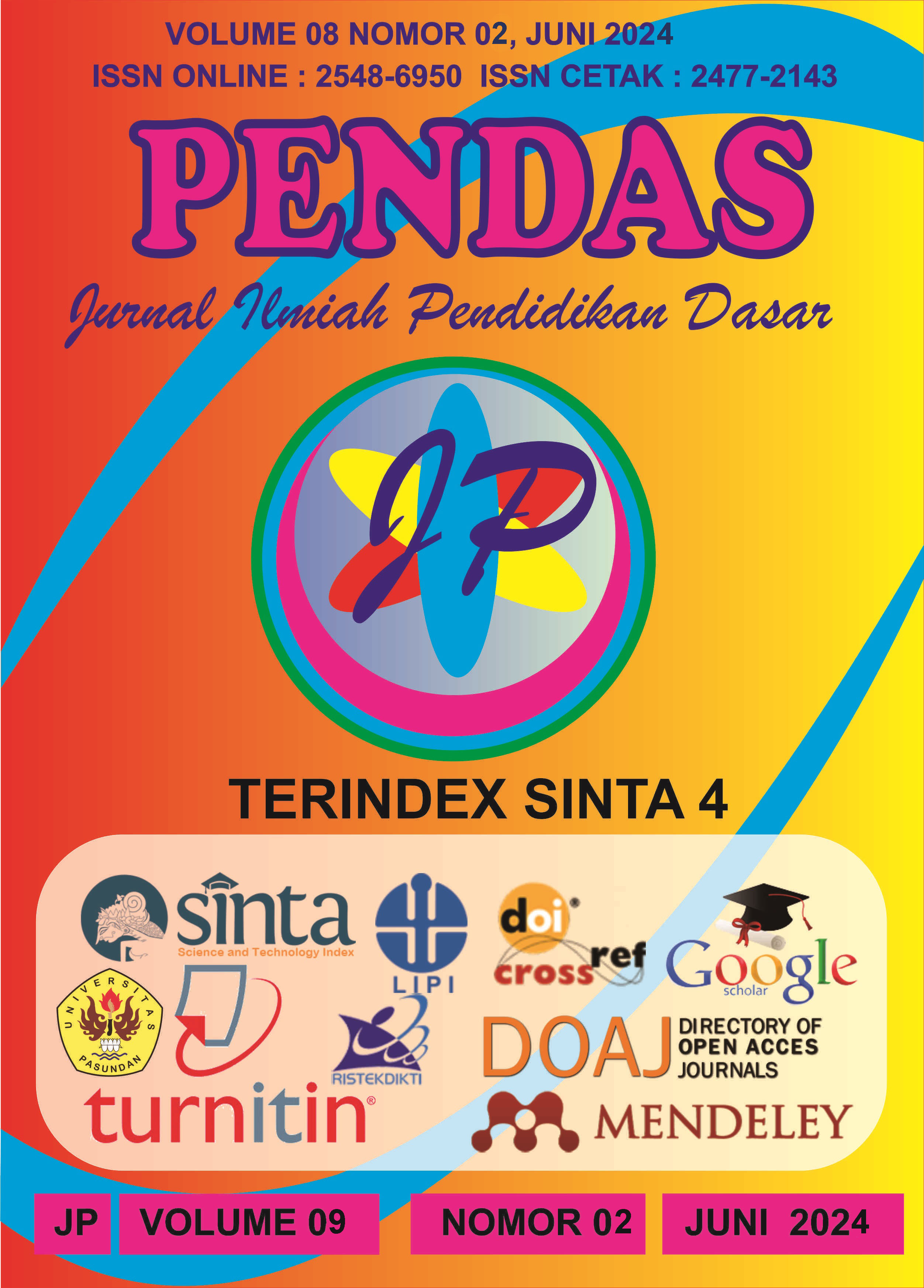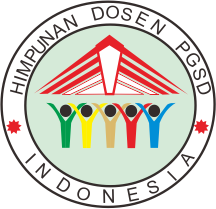PENGEMBANGAN SOAL HOTS DALAM MATERI LUAS UNTUK MENINGKATKAN KEMAMPUAN BERPIKIR KRITIS DI KELAS 4 SD KURIKULUM MERDEKA
DOI:
https://doi.org/10.23969/jp.v9i3.14816Keywords:
Mathematics, area of flat shapes, HOTS questions, critical thinking skills, independent curriculumAbstract
This research aims to produce a product in the form of a book containing questions about the area of flat shapes that is effective and efficient for improving critical thinking skills on HOTS questions. This type of development research is a research method used to produce certain products and test the practicality of the product. The model used is the ADDIE development model. Based on the results of trials on the development of HOTS questions, the material on the area of flat shapes at SD Negeri 20 Sitiung meets the valid and practical categories. Based on the assessment results of 3 validators, the HOTS question on the area of flat shapes received a percentage of 81% in the valid category. After analysis based on categories, namely: graphic content received a valid category with a score of 32 and a percentage of 80%, language received a valid category with a score of 32 and a percentage of 80% and material received a valid category with a score of 23 and a percentage of 83%.Downloads
References
Abdullah, A. H., Abidin, N. L. Z., & Ali, M. (2015). Analysis of students’ errors in solving Higher Order Thinking Skills (HOTS) problems for the topic of fraction. Asian Social Science, 11(21), 133–142. https://doi.org/10.5539/ass.v11n21p133
Bruner, J. (1984). Vygotsky’s zone of proximal development: The hidden agenda. New Directions for Child Development.
Diva, S. A., & Purwaningrum, J. P. (2023). Strategi Mathematical Habits of Mind Berbantuan Wolfram Alpha untuk Meningkatkan Kemampuan Berpikir Kritis Siswa dalam Menyelesaikan Bangun Datar. Plusminus: Jurnal Pendidikan Matematika, 3(1), 15–28.https://doi.org/10.31980/plusminus.v3i1.2579
Conklin, W. (2012). Higher order thinking skills to develop 21st century learners. Huntington Beach, CA: Shell Education Publishing, Inc.
Fanani, Zainal. “Strategi Prengembangan Higher Order Thinkking Skill dalam Kurikulum 2013” Journal Of Islamic Religious Education Vol. 2 No. 1. 2018.
Hamdi, S., Suganda, I. A., & Hayati, N. (2018). Developing Higher-Order Thinking Skill (HOTS) Test Instrument Using Lombok Local Cultures As Contexts For Junior Secondary School Mathematics. Research and Evaluation in Education, 4(2), 126–135.
Kemendikbud. (2017). Modul Penyusunan Soal Higher Order Thinking Skill (HOTS). Jakarta: Direktorat Pembinaan SMA Ditjen Pendidikan Dasar dan Menengah.
Pratama, G.S., & Retnawati, H. (2018). Urgensi Analisis Isi Higher Order Thinking Skills (HOTS) dalam Buku Teks Matematika. Jurnal Fisika: Seri Konferensi, 1097(2018).
Resnick, L. B. (1987). Education and learning to think. Washington, D.C: National Academy Press.
Wicasari, B., & Ernaningsih, Z. (2016). Analisis Kemampuan Berpikir Siswa dalam Menyelesaikan Permasalahan Matematika yang Berorientasi pada HOTS. Prosiding Seminar Nasional Reforming Pedagogy, 249–254.
Agustin, M, & Syaodih. (2008).Bimbi-ngan konseling untuk anak usia dini. Jakarta: Universitas Terbuka.
Brabender, V., & Fallon, A. (2009). Group development in practice: guidance for clinicians and researchers on stages and dynamics of change. Washington, DC: American Psychological Association.
Downloads
Published
Issue
Section
License
Copyright (c) 2024 Pendas : Jurnal Ilmiah Pendidikan Dasar

This work is licensed under a Creative Commons Attribution 4.0 International License.



















